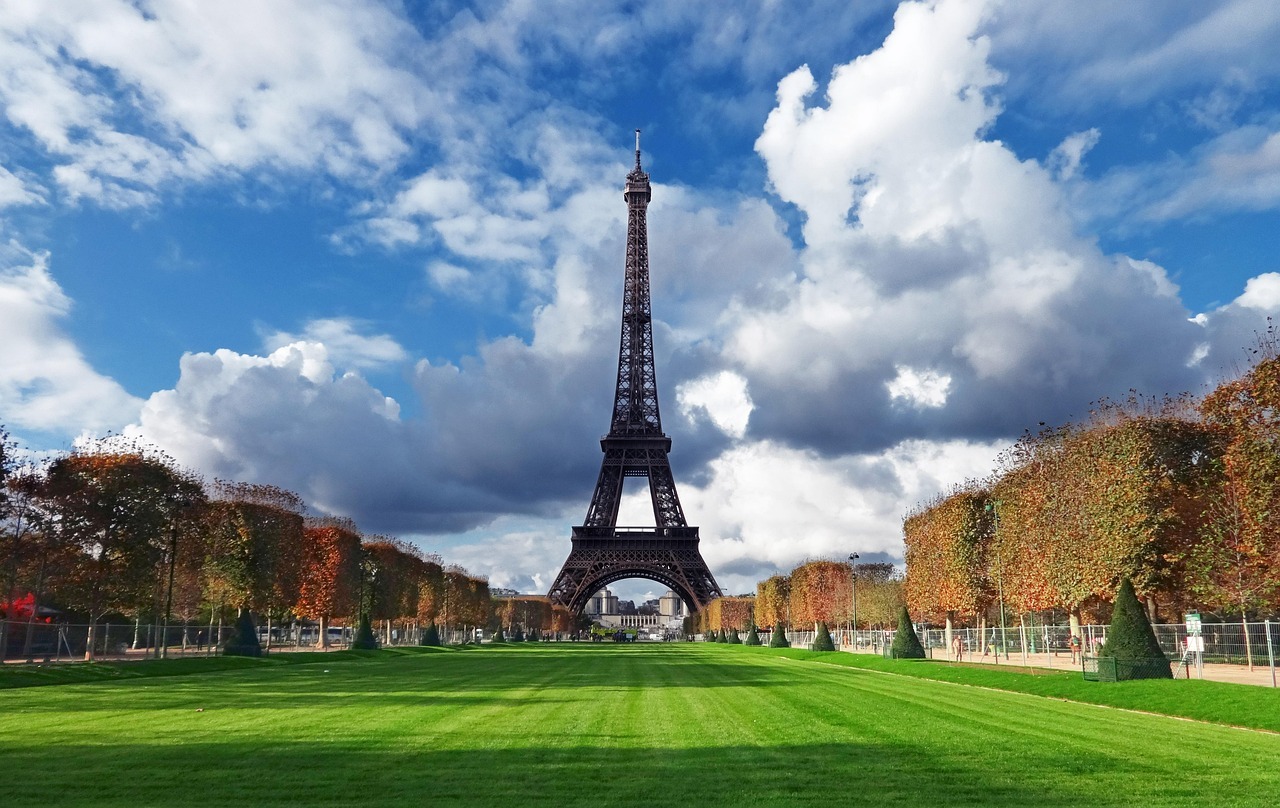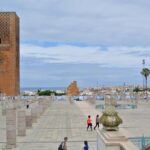France Guide
Some people can boast of having explored the world from top to bottom, of knowing every nook and cranny. But can they also say that they know France as well as these countries?
France is a transcontinental state with territories in Europe , America , Antarctica and the Indian Ocean. Overseas France includes countries such as Guadeloupe , Martinique , French Polynesia , Reunion Island , etc.
Metropolitan or hexagonal France is the European territory of metropolitan France . It is located in the western part of Europe . The bordering countries are Spain , Andorra, Italy , the Principality of Monaco, Switzerland , Germany as well as Belgium and Luxembourg .
It is bordered by the English Channel, the Atlantic Ocean and the Mediterranean, making it a geographical and cultural crossroads.
France: a popular destination for tourists and vacationers
France is a vast country that attracts travelers. It’s also the world’s number one tourist destination. The country has 13 administrative regions and 96 departments in mainland France. It’s bound to be difficult to see everything during your stay in France, which is why we’re offering a varied selection to help you.
A short description of France
Metropolitan France (European territory of France)
Geographic location : Western Europe
Capital : Paris
Major cities : Paris , Lyon and Marseille
Area of metropolitan France : 552,000 km2
Area of metropolitan France and overseas departments : 642,000 km2
Official language : French
Currency : Euro
Neighboring countries : Spain , Italy , Switzerland , Germany , Belgium , Luxembourg.
Why visit France?
Gastronomy
Codified by chef and culinary author Auguste Escoffier in the 20th century, French cuisine is a specialty in its own right within haute cuisine and grand cuisine. It is distinguished by the variety of ingredients and condiments and the skillful use of aromatic herbs to enhance flavor.
There are many restaurants in France that promote French cuisine. You can easily find one no matter what city or town you’re in.
Since 2010, French gastronomy, with all its cultural aspects, has been listed as a UNESCO Intangible Cultural Heritage Site . To enjoy French cuisine during your stay in France, you can taste dishes and specialties such as veal blanquette, beef bourguignon, pot-au-feu, Provençal daube, Dieppoise marmite, succulent cassoulet from Languedoc-Roussillon, Lyonnaise fish quenelle and many others.
Also enjoy French specialties to be consumed with wine: foie gras from the southwest of France with sweet wine, Savoyard fondue to be enjoyed with dry white or red wine.
Historical and cultural heritage
Despite globalization and the need for urbanization, France has managed to protect its monuments and remains. These sites preserve the essence of France’s history and unique characteristics. These are what historians call France’s historical and cultural heritage.
France has around 45,000 protected historical sites, including religious monuments, archaeological sites, museums, etc.
Most major cities have preserved their old historic centers, whether medieval, like Carcassonne, or modern, like Dijon. These perfectly preserved old buildings are what make city trips to France so charming.
Among the most present heritage elements in France are also castles. Some regions are particularly famous for this, such as the departments of the outer suburbs of Île-de-France with Versailles and Vaux-le-Vicomte among others, the Loire Valley for its Renaissance buildings, and the southwest for its medieval fortresses.
France’s protected natural areas
France is home to numerous protected areas dedicated to preserving its natural heritage. The country boasts 11 national parks and 58 regional parks, where urban planning is strictly regulated. These natural sites ensure the preservation of local biodiversity. They also promote craftsmanship. Among the most famous natural sites to discover during your stay in France are the Pyrenees National Park , the Calanques National Park, and Mercantour.
The art of living
France has Mediterranean influences, so the French like to enjoy and take the time to live like in La Dolce Vita . They also like to get together and party like the Spanish. In France, meals take time, we enjoy aperitifs and coffee breaks on the terrace.
Overall, France is a warm and welcoming country where the informal “tu” can be used quite quickly.
Passion for culture and art
To better familiarize yourself with the French art of living, cultivate a passion for culture and art. You can visit France’s history museums, such as the Musée d’Orsay and the Musée de l’Orangerie, as well as art museums in major cities.
Passion for gastronomy
The French are gourmets . In this context, it’s not really the quantity that matters. In reality, the French who appreciate good food are mainly attentive to the ingenious combination of ingredients, cooking techniques, presentation of dishes, the variety of dishes and flavors .
What to do and visit in France?
Discover the City of Lights
If you’re visiting France for the first time, don’t miss the opportunity to stay in the capital, which needs no introduction, with its Haussmannian buildings and French-style parks. Not to mention its world-famous museums and monuments.
Among them are the Eiffel Tower, the Louvre Museum, Notre-Dame Cathedral, the Tuileries Garden, the Arc de Triomphe, the Hôtel des Invalides …
It won’t be possible to do everything, but strolling along the banks of the Seine is enough to see a lot. The Île Saint-Louis is also a charming place for a quiet stroll. For shopping, the Marais district is ideal. It’s also full of old mansions and streets that have retained some of their medieval layout. The Canal Saint-Martin is also worth seeing; it’s a very popular spot for Parisians. As for greenery, the Jardin du Luxembourg is one of the most famous; it’s the archetypal Parisian park. The Buttes Chaumont is the most romantic, the green belt is the most surprising, while the Petite Ceinture walk is the most underground.
The French Riviera
A tourist destination nestled between the sea and the mountains, the Côte d’Azur, which encompasses the Var, Bouches-du-Rhône, and Alpes-Maritimes departments, attracts tourists looking for an unforgettable vacation in France. Therefore, it’s best to avoid the summer season. Prices double and crowds are enormous.
Following the Mimosa Route can be a good idea to start, especially if you’re visiting the region in winter. This 130-kilometer route allows you to appreciate both the coastline and the hinterland landscapes from Bormes-les-Mimosas to Grasse. The Esterel Route is also a marvel for the eyes with its steep coastline and characteristic red rocks.
On the city side, old Nice , the seaside at Cannes, Antibes and Juan-les-Pins await you. Don’t miss the hilltop villages of the hinterland and the charm of the perfume capital, Grasse.
Lyon
An economically thriving city in the Auvergne-Rhône-Alpes region, Lyon is renowned for its gastronomy and architectural heritage, which appeals to travelers of all stripes. The second most populous city in the country, it boasts some remarkable ancient ruins, including the Fourvière Theatre. The Saint-Jean district has retained its imposing Renaissance buildings and traboules, urban passageways typical of the region. The Croix-Rousse hill was home to the textile industry and, like much of the city, is listed as a heritage site. There’s no shortage of monuments to see in the ancient capital of the Gauls.
The city has no shortage of restaurants. They’re clearly part of its success. Therefore, for an unforgettable memory, it’s highly recommended to take a tour of Lyon’s best bouchons.
The Wine Routes
France is internationally renowned for the refinement and unparalleled flavors of its prestigious wines. So why not explore these delicious beverages?
You’re spoiled for choice!
Follow the Burgundy wine route
During your stay in metropolitan France, you can follow the wine tourism routes of Burgundy . The main characteristic of Burgundy wines is that they are single-varietal. They are renowned for their finesse.
Here are some ideas for itineraries to discover them:
The Côte de Nuits route runs from Dijon to Corgoloin. It allows you to discover prestigious red wines, including 24 grands crus that have made Burgundy famous worldwide.
You can also follow the Côte de Beaune route , which runs from Corgoloin to Santenay. This route focuses on discovering the production of white Chardonnay wines, including Montrachet and Corton-Charlemagne.
Finally, there is also the Yonne vineyard route . This 260 km long circuit allows you to discover the wine regions of Chablis and the vineyards of Grand Auxerrois. During this getaway, appreciate the splendor of the landscapes and the attraction of the hiking trails between vineyards and forests of the Serein Valley.
The Alsace Wine Route
Head east! This tourist itinerary allows you to discover up to 73 communes in the Grand-Est region. The region is the largest producer of white wine in the country.
The Alsace Wine Route is 170 kilometers long. It’s an opportunity to discover the cultivation, grape variety selection, harvest, and bottling processes of these wines, produced late in the season due to the cold climate. Alsace wines have a reputation for being fresh.
This route has the advantage of passing through some of the most beautiful villages in France, with their colorful half-timbered houses. Spring is a great time to admire storks and their nests perched on chimneys.
The Bordeaux Wine Route
This is the second most famous region, along with Burgundy wines. It allows visitors to discover the wine estates of Gironde and the entire southwest region of France. The Bordeaux vineyards boast up to 38 appellations of controlled origin. The vintages here are the result of complex blends of grape varieties that give them their power.
Among the renowned regions, the Médoc vineyard is well worth a visit. This wine-growing region is bordered by the Jalle de Blanquefort and the Pointe de Grave. It’s an opportunity to taste prestigious AOC wines such as Pauillac, Margaux, and Saint-Julien.
You can also explore the wine trail of the Entre-deux-Mers vineyards, on the border of the Garonne and Dordogne rivers. This section allows you to enjoy splendid landscapes and breathe the fresh air in a lush region.
Finally, it’s impossible not to mention the world-famous Saint-Emilion wines. The village alone is worth the detour for its charm and heritage.
The mountain ranges
The Alps
It is the most famous of the French mountain ranges. This is undoubtedly due to its highest peak, which is also the roof of Europe: Mont Blanc. At 4,808 meters, it is one of the most popular mountains for climbers and vacationers, along with the Mer de Glace and the Aiguille du Midi lookout.
Numerous ski resorts are located there, making it ideal for winter vacations. In summer, the lakes attract visitors.
The Massif Central
The Massif Central is a prime destination for hiking enthusiasts and volcanologists. The region is known for its chain of extinct volcanoes, which give the landscape its unique shapes. Its highest peak is the Puy de Sancy, at an altitude of 1,855 meters.
You also have access to the Cévennes National Park and the Millevaches Plateau in Limousin. In short, for a deep breath of fresh air and wide open spaces, the Massif Central is the place to be.
The Pyrenees
The Pyrenees are approximately 430 km long from east to west. This mountain range culminates at 3,404 meters above sea level at the Pic d’Aneto . It marks the border between France and Spain. A natural park preserves its striking landscapes, such as those of the sumptuous Gavarnie cirque. Numerous hiking trails for all levels allow you to explore them.
Your visit to the Pyrenees massif also leads to the discovery of other pleasant sites and places such as the Col de Tourmalet, the Ars waterfalls, Lourdes and its famous Massabielle cave.
Walks and escapes in the Jura massif
The Jura Massif is a mountain range with an area of 14,000 km2 and a height of 1,720 metres.
In winter, it takes on the feel of Lapland or the great Canadian north. Less crowded than the Alps, it’s a favorite spot for hiking, cross-country skiing, and dog sledding enthusiasts.
In summer, some places offer almost heavenly panoramas. This is the case of the famous Belvedere des 4 lacs , in the village of La Chaux-du-Dombief. The view is splendid on the surrounding landscapes and the sometimes turquoise waters of the lakes.
Many other sites are worth a visit, such as the Haut-Jura regional nature park , the Baume-les-Messieurs cave, the Crêt de Chalam for climbing enthusiasts, etc.
The Vosges Mountains
This mountain range covers an area of up to 6,000 km2 and peaks at 1,423 meters at the Grand Ballon. It is certainly the wildest and one of the least touristy, unfairly so.
For your getaway to the Vosges, discover the famous Blue Line of the Vosges . It forms a natural border between Alsace and a large part of Lorraine. You’ll find hiking trails there that allow you to discover and appreciate the region’s characteristic landscapes.
If you’re visiting the Vosges with your family, head to the Ballons des Vosges Regional Nature Park. The pools at the Ribeauvillé balneotherapy center are also worth a visit if you’re looking for a 15-minute break to relax and get back in shape.
In winter, the region also has ski resorts to satisfy skiing enthusiasts.
Normandy
Normandy is one of the most frequently cited regions by foreign magazines when it comes to visiting France. Easily accessible from Paris, it owes its popularity to the bucolic charm of its fields and half-timbered cottages. Its holiday-friendly atmosphere has traveled the world thanks to Monet’s paintings and the famous writers who enjoyed vacationing there.
The Alabaster Coast, with its impressive cliffs, including those of Etretat, is therefore not to be missed . In fact, the entire Normandy coastline, all the way to the magnificent Mont Saint Michel, is worth a road trip.
For history buffs, the Caen Memorial, a museum dedicated to Peace, is a must-see. The city is also home to William the Conqueror’s castle, the Abbaye aux Dames, and the Abbaye aux Hommes. Inland, near the bends of the Seine, Rouen, the city of 100 bell towers, awaits.
Finally, if you’re looking for something a little more unusual, Le Havre is well worth a visit. This bombed-out city is a UNESCO World Heritage Site for its contemporary architecture, the brainchild of architect Auguste Perret.
The Breton islands
Brittany seduces visitors with the breadth and appeal of its Celtic culture , which characterizes its history and traditions. It’s also notable, of course, for its wild coastline. Moreover, the Breton coastline is home to over 70% of the islands in metropolitan France. Each has its own charm, so it’s impossible to list them all.
Located in the southern part of Brittany, Belle-Île-en-Mer is the largest of them. Its wild beauty, buffeted by winds and waves, is sure to captivate. Numerous hiking trails allow you to discover every nook and cranny and its monuments.
If you love spring, take the opportunity to explore the islands of the Gulf of Morbihan, which offer exceptional views. The island of Batz in Finistère is also renowned for its flora.
But no matter which island you visit, there’s no chance you’ll be disappointed.
The castles of the Loire
The Loire Valley region is a popular destination for cultural tourism enthusiasts, boasting an impressive collection of Renaissance-style châteaux. This is a unique opportunity to appreciate the architecture of these monuments, which initially had a military purpose and later became exceptional residences with the construction of Chambord by François I.
This vast château captivates with its typical Renaissance-style architecture and numerous fireplaces. Chaumont- sur-Loire offers a lovely view of the river and boasts beautiful gardens. Chenonceau, nicknamed the “Ladies’ Château,” is built above a river. Canoeing under its arches is a great activity.
Other castles worth a visit in the Pays de la Loire include the Château de Cheverny, the royal fortress of Chinon, and the Château de Blois. There’s plenty to choose from.
Corsica
It is nicknamed ” the island of beauty ” because of its beautiful white sand beaches, radiant sunshine, picturesque and varied landscapes, and renowned hiking trails, including the GR20. It is a popular destination for holidays between the sea and the mountains.
There’s plenty to see in Corsica , but if there’s one piece of advice to give, it’s to avoid summer. The island’s population is so vast that it’s difficult to get around and fully appreciate its charms.
On the coast, we highly recommend strolling through the hilltop streets of Bonifacio and its nature reserve, which is among the most beautiful on the island. Porto Vecchio, Calvi, and more. All water sports can be enjoyed there. Near Ajaccio, don’t leave without visiting the Sanguinaires Islands and the Calanques de Piana. Cap Corse is ideal if you want to enjoy wild landscapes with just a few villages.
Corsica is not just about the sea ; the inland area is also very beautiful, with hilltop villages that have retained their authenticity and impressive mountain landscapes.
Bordeaux
Capital of the wines of the same name, Bordeaux is gaining in renown year after year both among tourists and the French who decide to settle there.
Despite the inevitable urbanization, Bordeaux has managed to maintain an attractive green setting. This city has parks and gardens conducive to relaxation and rest: Bordeaux Park, Grenouillère Garden, Garonne Riverbanks … Fully landscaped, the quays offer numerous opportunities for strolls with cultural sites like the Darwin Ecosystem and the Bassins de Lumières. Located in the former German submarine base from the 1945 war, this cultural center is a perfect marriage of art and digital know-how.
The city center is full of cultural sites such as the sea and marine museum, the Aquitaine museum , the grand theater, the Fine Arts museum, the Cailhau gate, etc.
Ideas for activities not to be missed
River Cruises
Cruising is an excellent way to visit France, as many waterways are designed for navigation. This allows you to discover several landscapes, cities, and countries during your stops. From river cruise ships to barges and even more intimate models, many options are available.
You can try a river cruise on a barge on the Lot, the Sarthe, the Seine, the Burgundy Canal… The Canal du Midi is also very popular.
Christmas markets in Alsace
While the Alsace region can be visited year-round, winter has a special charm, especially as the holiday season approaches. Christmas is a time for markets and festivities, while homes are adorned with festive lights.
If you have the opportunity, it’s not to be missed, but you should remember to book in advance. Strasbourg is the most famous and said to be the largest in Europe. Colmar is also a must-see, along with the villages of Riquewhir and Ribeauvillé. All the locals participate, and many events are organized. In addition to being a feast for the eyes, the Christmas markets in Alsace are also a chance to feast your eyes.
The Great Lille Sale
Lille is one of the prettiest cities in France and it is recommended to stay there during the first weekend of September. This is, in fact, the time of the famous Lille flea market . Every year, this event brings together thousands of people from all over France and even several European countries , just for the atmosphere.
At the Grande Braderie , you can buy second-hand goods, second-hand items, antiques, clothing, and more. It’s perfectly possible to negotiate prices in a friendly atmosphere. You can also find local restaurants and fast-food outlets where you can enjoy mussels and fries or fricadelles .
Nightlife in Paris
The City of Lights is a paradise for night owls and bon vivants. Its streets at night not only have a special charm , but they also offer plenty of opportunities to stay up late.
Among the most famous establishments, there are of course the cabarets. You can attend shows and performances at the Moulin Rouge , the Paradis Latin or even the Lido . On the program, there is the unmissable French Cancan but also many scenes with feathers and sequins. The Crazy Horse is famous for its shows built on light effects that literally dress the dancers.
You can also stroll at night on the terraces along the Parisian canals or why not eat in the middle of the night at Au Pied de Cochon, La Poule au Pot or even at the Café des Capucines.
The Brotherhood of Little Bellies in Limoges
In France, gastronomy is king, it’s well known. If you’re passing through Limoges in mid-October, make a stop at the ” Frairie des Petits Ventres” (Frairy of Little Bellies) . This festive event takes place on the third Friday of October in Limoges. Originally created to protect the Boucherie district from destruction, this event has become a popular and gastronomic festival allowing citizens to consume meat, tripe-based products, baked goods, pastries, and street food. A great atmosphere guaranteed!
Carnivals
Carnivals are part of French culture and lifestyle. The most interesting carnivals are those that precede Shrove Tuesday. Cities and towns celebrate this carnival in their own way, taking into account their cultural traits and specificities .
The Nice Carnival
The Nice Carnival is a must-see for tourists visiting this southeastern French town in winter. It’s the third most famous carnival in the world, after those in Rio de Janeiro and Venice. The festivities take place in February and last for three weeks.
The Nice Carnival is a ritual designed to bring back spring. History also attributes a religious dimension to this event. It is then translated as a period of celebration before the 40 days of Easter Lent . The theme of the parade changes each year and the floats are decorated accordingly.
The Dunkirk Carnival
The Dunkirk Carnival is well worth a visit if you’re visiting France towards the end of February. Here, you’ll have to leave your shyness at the door. The locals are very attached to it and think about their costumes weeks in advance.
Carnival-goers, all in costume, then parade through the streets. This is an opportunity to play drums, trumpets, and trombones. It’s also a time to sing songs like the Cantata à Jean Bart…
Participants in the Dunkirk carnival still gather at night to celebrate. It’s always an opportunity to sing, play music, and tell plenty of jokes.
The Granville Carnival
This carnival takes place over a period of 5 days preceding Shrove Tuesday.
The Granville Carnival was a celebration held in honor of fishermen who went cod fishing in Newfoundland, Canada. This carnival has endured over time and was listed as a UNESCO World Heritage Site in 2016.
Costumes, songs, music, and float parades are the order of the day at this carnival. Entertainment also includes confetti battles, a parody of the Carnival King’s trial, and plenty of laughter.
Amusement parks
For your family trip to France, don’t forget to spend some quality time at the amusement parks. It’s a great way to have fun while also delighting the children.
Disneyland Park is the most famous and most visited attraction in the country. This theme park covers an area of 55 hectares. It’s an enchanted kingdom that transports you directly to the magical world of Walt Disney. It’s the only one on the European continent, so it’s very popular.
Parc Astérix is worth a visit for fans of the famous Gauls, but not only for them. Located in the town of Plailly, in the Oise department, this theme park allows you to stroll through Roman, Gallic, Greek, and Egyptian settings, all linked to the stories of Uderzo and Goscinny.
Also take a tour of the Cité de l’Espace . Here you can observe up close the discoveries made by Man during his many voyages into space. Also admire the gems on display there, including a replica of the Mir space station, an Ariane 5 rocket with a Soyuz spacecraft, an observation dome, and more.
Other theme and amusement parks worth a visit in France include Futuroscope, Europark, Vulcania, Atlantik Park, Puy de Fou, and more.
Travel formalities in metropolitan France
For nationals of European Union countries, a valid passport or identity card is sufficient for entry into mainland France.
To stay in France, nationals of countries outside the European Union must have a valid passport and a visa.
Weather in France
France enjoys a temperate climate, which is one of the reasons why this country is popular with tourists. It offers mild and pleasant temperatures for part of the year, but the seasons are distinct. In summer, temperatures can reach well above 30 degrees, especially in the south, and drop below 0 degrees in winter, especially in the mountains.
The wet season in metropolitan France begins in October and ends around mid-March . From September to November, rain and showers can occur early or late in the day. It is mainly the wind that causes a drop in temperature and creates a humid atmosphere.
From December to March, rain is frequent. So is snow.





